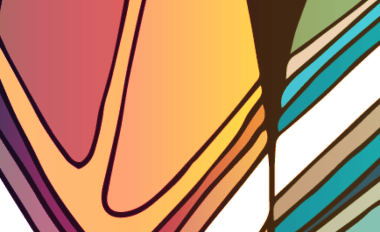Cultural Heritage is the legacy we inherited from our Ancestors. And it includes responsibilities to protect both the physical aspects – land, water, flora, fauna and today, archaeology; and the intangible aspects - our story, language, mythology and lore. Our Ancestors understood that caring for Country allowed Country to care for them.
Aboriginal Peoples have a deep connection with land and water with Country, which is central to their spiritual identity, and have maintained this connection despite the devastating impacts of colonisation and forced removal. Unlike modern Australian perceptions, land is not just a commodity to be owed and used, but rather a place of belonging as well as way of connecting to one’s Culture, Spirit, People and identity.
Aboriginal Peoples have the fundamental right, as enshrined in the UN Declaration, to control, manage and care for Country. This includes the right to be involved in decisions relating to the access, use and development of Country, and to ensure appropriate care and protection is maintained for future generations.
Secret or Sacred Objects are a big part of who we are. They carry the stories that shape us, and we, and future generations, in turn shape them. They need to be with their rightful custodians so they can keep carrying our stories and our connections with them.
Legislation like the AHA which is designed to protect Aboriginal Cultural Heritage, empower Traditional Owners as protectors of their Cultural Heritage and promote respect for Aboriginal Cultural Heritage, must ensure that Traditional Owners are afforded the capability – legal and otherwise - to enforce these rights. As currently drafted, the AHA has been called ‘reactive not proactive’ in the protection of Aboriginal Cultural Heritage, and certain lands are exempt from its application i.e. those controlled by the Australian Defence Force.
The Budj Bim listing really breaks new ground in regard to not only how UNESCO responds to it and ICOMOS, but the Australian Government and the Victorian Government. It was a real vindication and a surprise for those other countries to recognise the work that we’ve done as Gunditjmara People, the broader community, the Australian and Victorian Governments, that we’ve produced what they consider best practice.
Currently, the AHA affords Traditional Owners some rights in relation to development through the CHMP and CHP systems. However, many community members consider these systems to be a "box ticking" exercise for developers (often large development companies with immense resources) to ensure their planning application is approved.
While giving Traditional Owners the power to be a part of the process, the current system does not allow Traditional Owners to comprehensively control the outcome of a project on Country.
This may mean that Traditional Owners are provided less flexibility under the AHA than the system under Part IIA of the Aboriginal and Torres Strait Islander Heritage Protection Act 1984 (Cth). Under the Commonwealth Act, material evidence still had to be found within the footprint of the
proposed activity and management of parts of activity where Cultural Heritage had yet to be found was possible. However, under the AHA, management only takes place in areas that have been proven to contain Cultural Heritage.
As Mick Harding from the Victorian Aboriginal Heritage Council highlights:
We [Traditional Owners] do get to have the final say and put in recommendations [under the current CHMP system], but more often than not it’s about destruction – all we get is salvage. Who is to say we can reconstruct the place by imagination? If that place and space is there, then [we] can paint a clearer picture of the heritage.
There is at least some shift occurring and movement away from the tick-the-box approach to engaging with the project’s Traditional Owners of that Country from the start. A residential housing development in Kalkallo, a locality within the Wurundjeri Woi Wurrung Cultural Heritage Aboriginal Corporation RAP area, is an example of a more consultative approach with Traditional Owners. This approach led to the retention and incorporation of numerous sites occurring along the watercourses and on top of stony rises as opposed to the more common large-scale salvage and resulting destruction of sites.
Positive models of Aboriginal self-determination and collaboration for Victorian Traditional Owners caring for Country have and continue to be developed including natural resource management and joint management of national and state parks. Through the TOSA, Traditional Owners
groups have been able to develop and enter into plans with Parks Victoria for the appropriate management of park lands and waters.
There has also been the return and revitalisation of cultural practices enabling Traditional Owners to care directly for Country, from fire management and ranger programs to the development of economic opportunities through tourism, research, bush foods and interpretation.
The Dja Dja Wurrung Clans Aboriginal Corporation, the RAP for the central Victorian goldfields, has received Federal Government support to research the viability of growing commercial levels of Kangaroo Grass. Once a vegetation plentiful across Victoria’s open grasslands, the grass once harvested and milled by Ancestors is being used by Traditional Owners as a means to grow smarter, more sustainable agricultural products and support the organisation.
Discussion question: What does caring for Country mean for you?
- How do Aboriginal Peoples want to interact with Country and with sites?
- How can Aboriginal Peoples be empowered to care for Country?
- What measures would empower Aboriginal Peoples to effectively pass on knowledge about Country and sites to future generations?
Updated

